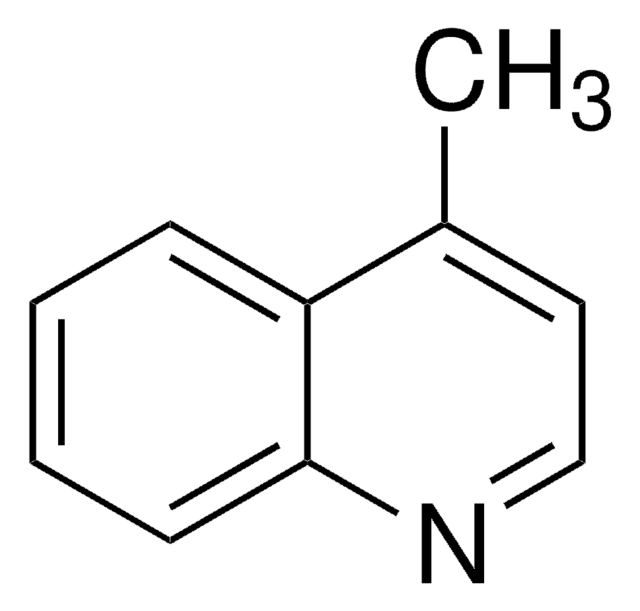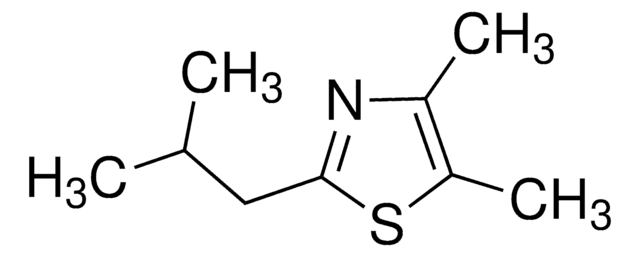W274402
6-Methylquinoline
≥98%, FG
Synonym(s):
p-Toluquinoline, NSC 4152
About This Item
Recommended Products
biological source
synthetic
grade
FG
Halal
agency
meets purity specifications of JECFA
reg. compliance
EU Regulation 1334/2008 & 178/2002
vapor density
>1 (vs air)
assay
≥98%
refractive index
n20/D 1.614 (lit.)
bp
256-260 °C (lit.)
density
1.067 g/mL at 20 °C (lit.)
application(s)
flavors and fragrances
documentation
see Safety & Documentation for available documents
food allergen
no known allergens
organoleptic
leather
SMILES string
Cc1ccc2ncccc2c1
InChI
1S/C10H9N/c1-8-4-5-10-9(7-8)3-2-6-11-10/h2-7H,1H3
InChI key
LUYISICIYVKBTA-UHFFFAOYSA-N
Looking for similar products? Visit Product Comparison Guide
Related Categories
signalword
Warning
hcodes
Hazard Classifications
Acute Tox. 4 Oral - Skin Irrit. 2
Storage Class
10 - Combustible liquids
wgk_germany
WGK 3
flash_point_f
235.4 °F - closed cup
flash_point_c
113 °C - closed cup
ppe
Eyeshields, Faceshields, Gloves, type ABEK (EN14387) respirator filter
Certificates of Analysis (COA)
Search for Certificates of Analysis (COA) by entering the products Lot/Batch Number. Lot and Batch Numbers can be found on a product’s label following the words ‘Lot’ or ‘Batch’.
Already Own This Product?
Find documentation for the products that you have recently purchased in the Document Library.
Our team of scientists has experience in all areas of research including Life Science, Material Science, Chemical Synthesis, Chromatography, Analytical and many others.
Contact Technical Service








